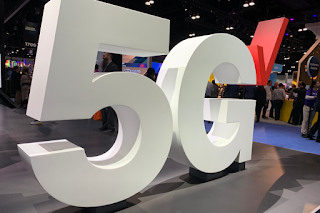GlobalFoundries is set to receive $1.5 billion in planned direct funding as part of the U.S. CHIPS and Science Act.
The money will be used to expanding existing fabrication facilities as well as to build new capacity, including:
- Expanding GF’s existing fab in Malta, New York, by adding critical technologies already in production in GF’s Singapore and Germany facilities. These added capabilities are geared towards enabling the U.S. auto industry. As vehicles transition from mechanical to electronic systems, the number of semiconductor chips in each car or truck continues to soar. This expansion is key to ensuring supply chain resilience for the growing demand and to delivering for GF’s automotive customers including General Motors. This will continue to diversify GF’s flagship Malta fab into new technologies and end markets.
- Construction of a new state-of-art fab on the Malta campus to meet expected customer demand for U.S.-made essential chips across a broad range of markets and applications including automotive, aerospace, defense and AI. The new fab, which has already been granted some necessary permitting, will leverage the site’s existing infrastructure and ecosystem, enabling a fast and efficient path from construction to production. GF’s said the new fab will be uniquely positioned to capture the feature-rich mature, essential chip segment which is expected to continue to represent more than 60% of the semiconductor market. Construction of this new fab combined with expansion of GF’s existing site is expected to triple the existing capacity of the Malta campus over the next 10+ years.
These two projects are expected to increase wafer production to 1 million per year once all phases are complete.
- Modernization of GF’s longest continuously operated fab and the nation’s first and largest Trusted 200mm facility in Essex Junction, Vermont. The project will upgrade existing facilities, expand capacity as well as create the first U.S. facility capable of high-volume manufacturing of next-generation gallium nitride (GaN) semiconductors for use in electric vehicles, power grids, data centers, 5G and 6G smartphones and other critical technologies.
GF plans to invest more than $12 billion over the next 10 plus years across its two U.S. sites through public-private partnerships with support from the federal and state governments as well as from its ecosystem partners, including key strategic customers.
New York Governor Hochul unveiled a $575 million funding proposal for the New York State Green CHIPS initiative, aimed at backing two projects in Malta, New York. Additionally, a planned allocation of $15 million for workforce development activities at GlobalFoundries and $30 million for infrastructure enhancements and energy incentives, facilitated by the New York Power Authority (NYPA), were also announced.
“GF is proud to announce this proposed funding from the Department of Commerce and New York State and appreciates the collaboration of the CHIPS Office and the Empire State Development Corporation throughout this process. These proposed investments, along with the investment tax credit (ITC) for semiconductor manufacturing, are central to the next chapter of the GlobalFoundries story and our industry. They will also play an important role in making the U.S. semiconductor ecosystem more globally competitive and resilient and cements the New York Capital Region as a global semiconductor hub,” said Dr. Thomas Caulfield, president and CEO of GF. “With new onshore capacity and technology on the horizon, as an industry we now need to turn our attention to increasing the demand for U.S.-made chips, and to growing our talented U.S. semiconductor workforce.”
“Semiconductors are in everything from our cellphones, to refrigerators, to cars, and our most advanced weapons systems, and access to them carries important economic and national security implications. It was the shortages of semiconductors during the COVID-19 pandemic that raised prices for consumers and led to the shutdown of automobile manufacturing sites across the country,” said Secretary of Commerce Gina Raimondo. “Thanks to the CHIPS and Science Act, we’re working to onshore these critical technologies in order to bolster the supply of domestic chips that are essential to manufacturing cars, electronics, and national defense systems in New York, Vermont, and states across the country.”
Customers expressing support for the GF announcements included: AMD, General Motors, Lockheed Martin, and Qualcomm.
- GlobalFoundries was established in 2009 through the merger of AMD's manufacturing arm and the Advanced Technology Investment Company. In 2010, GlobalFoundries acquired Chartered Semiconductor in 2010, significantly boosting its manufacturing capabilities and global footprint.
- The Malta, New York, facility, Fab 8, was announced in 2009, shortly after GlobalFoundries was created from the divestiture of AMD's manufacturing arm. The site was chosen for its strategic location and the incentives offered by the state of New York.
- In 2015, GlobalFoundries acquired IBM's microelectronics division, which included semiconductor manufacturing facilities, technology, and intellectual property. This acquisition was part of a strategic move by GlobalFoundries to expand its technology portfolio and manufacturing capabilities. As part of the deal, IBM paid GlobalFoundries $1.5 billion to take over its semiconductor operations, which included several manufacturing plants and a significant number of IBM employees transitioning to GlobalFoundries.


















